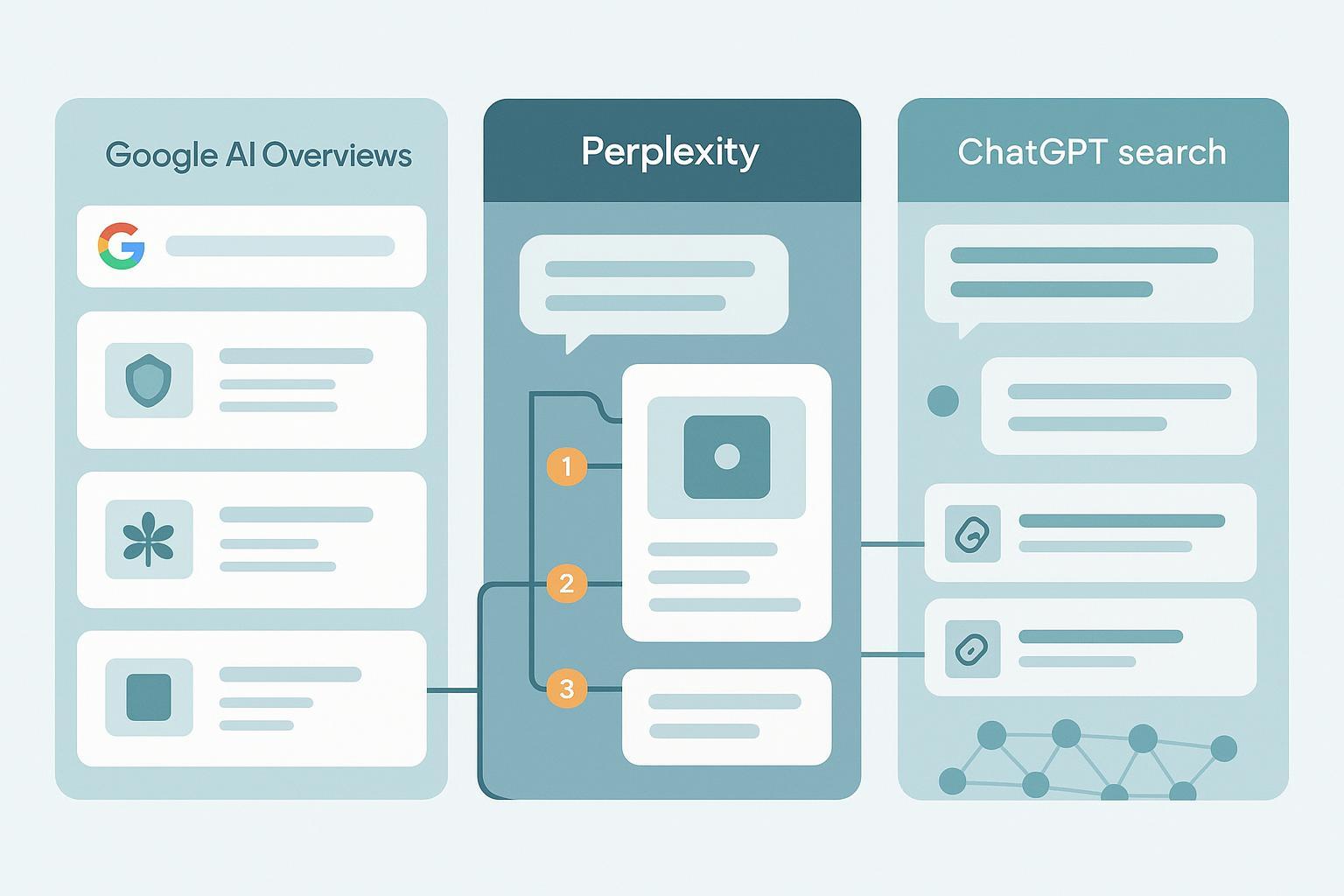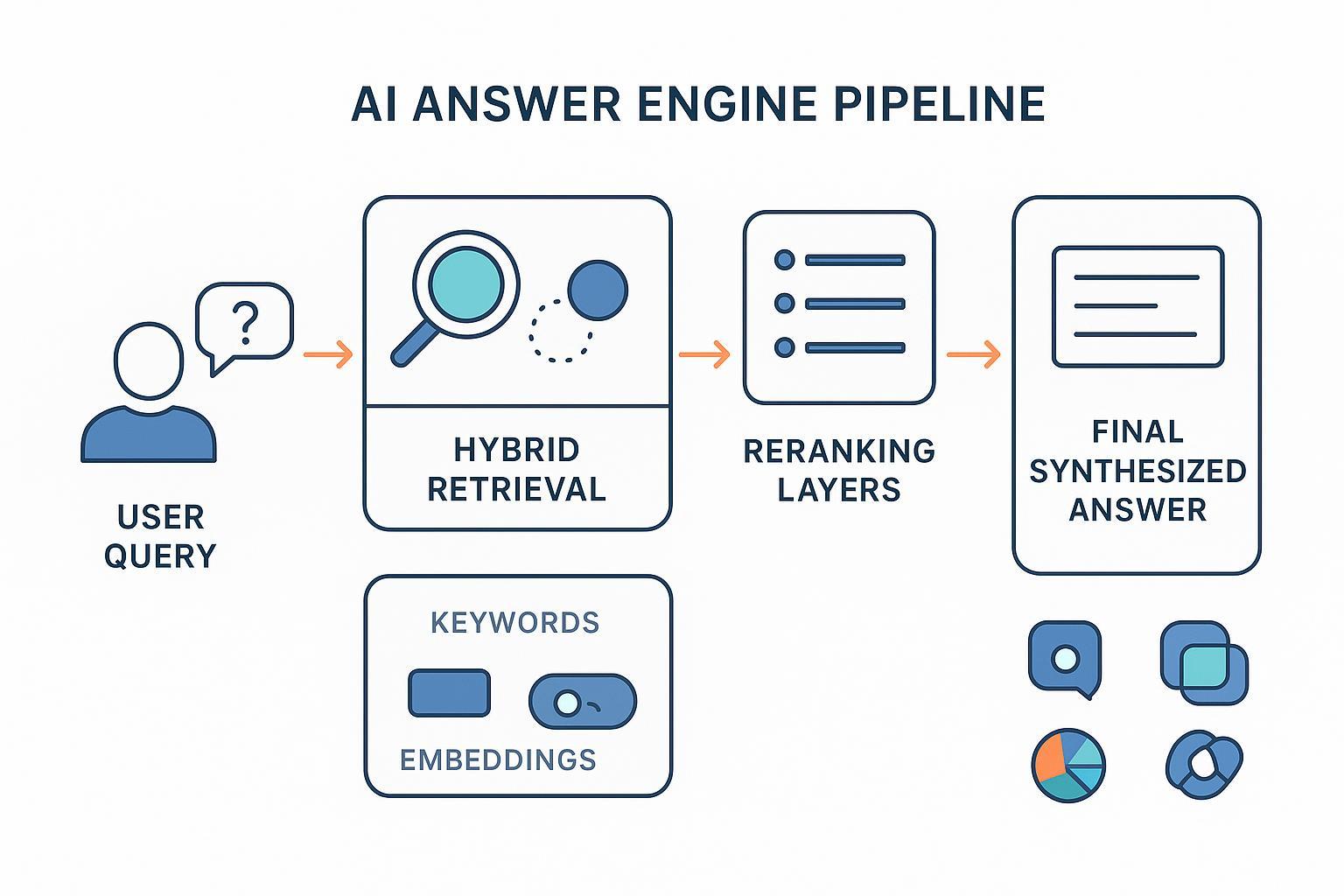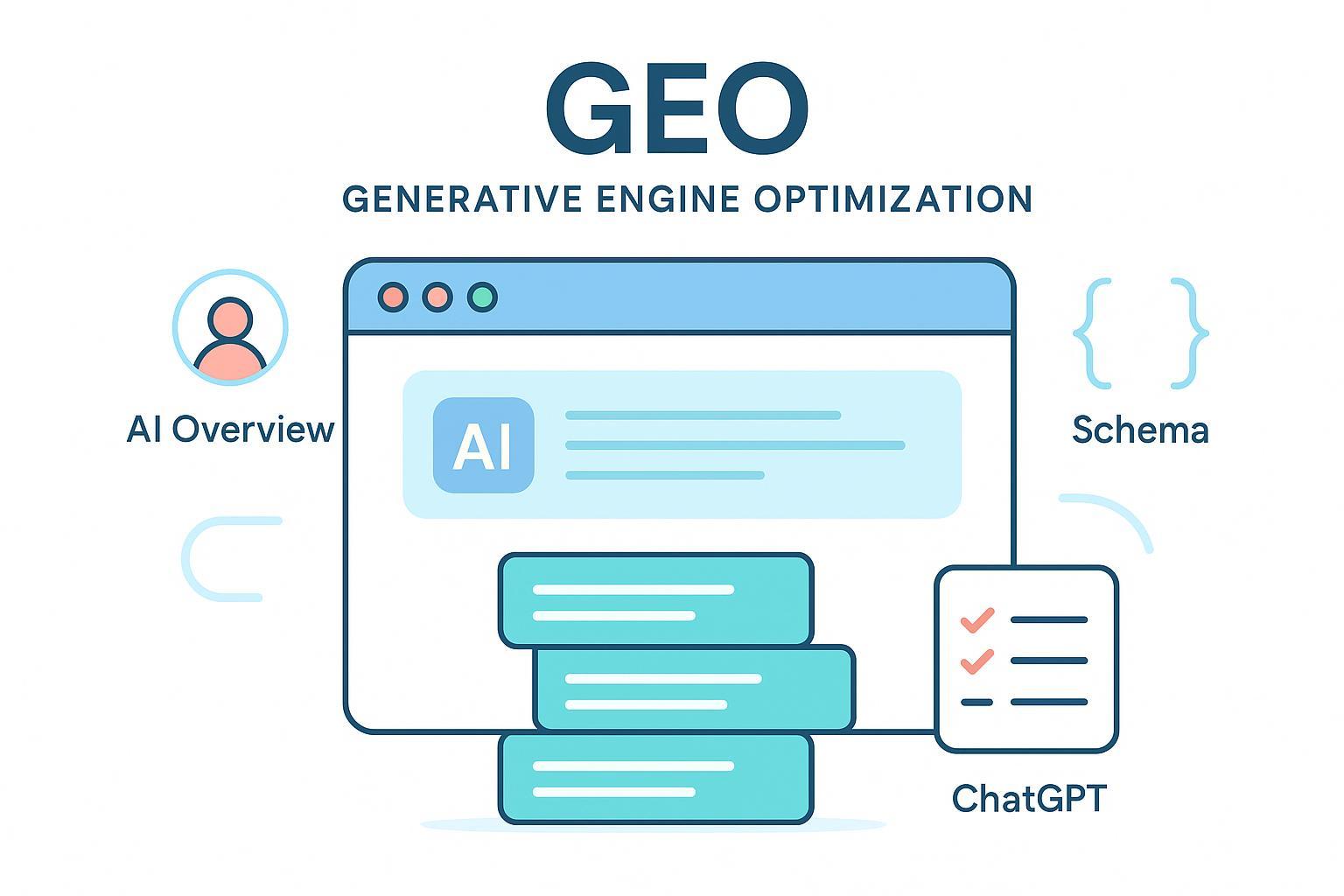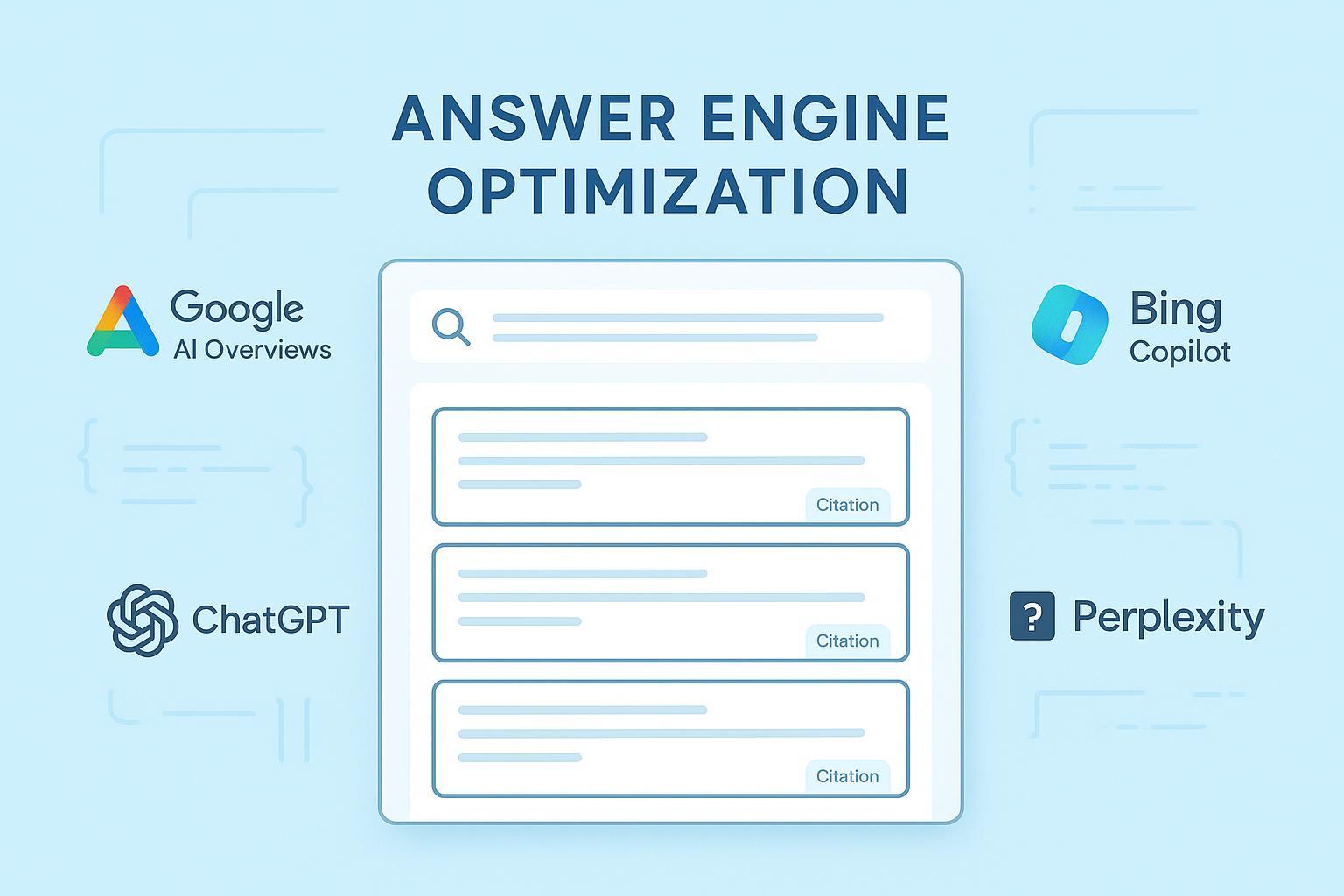Zero-Click Search Best Practices for 2025: Mastering AI Visibility
Discover expert best practices for zero-click search dominance in 2025—optimize for AI Overviews, Knowledge Panels, and SERPs. Proven workflows for SEO leaders.

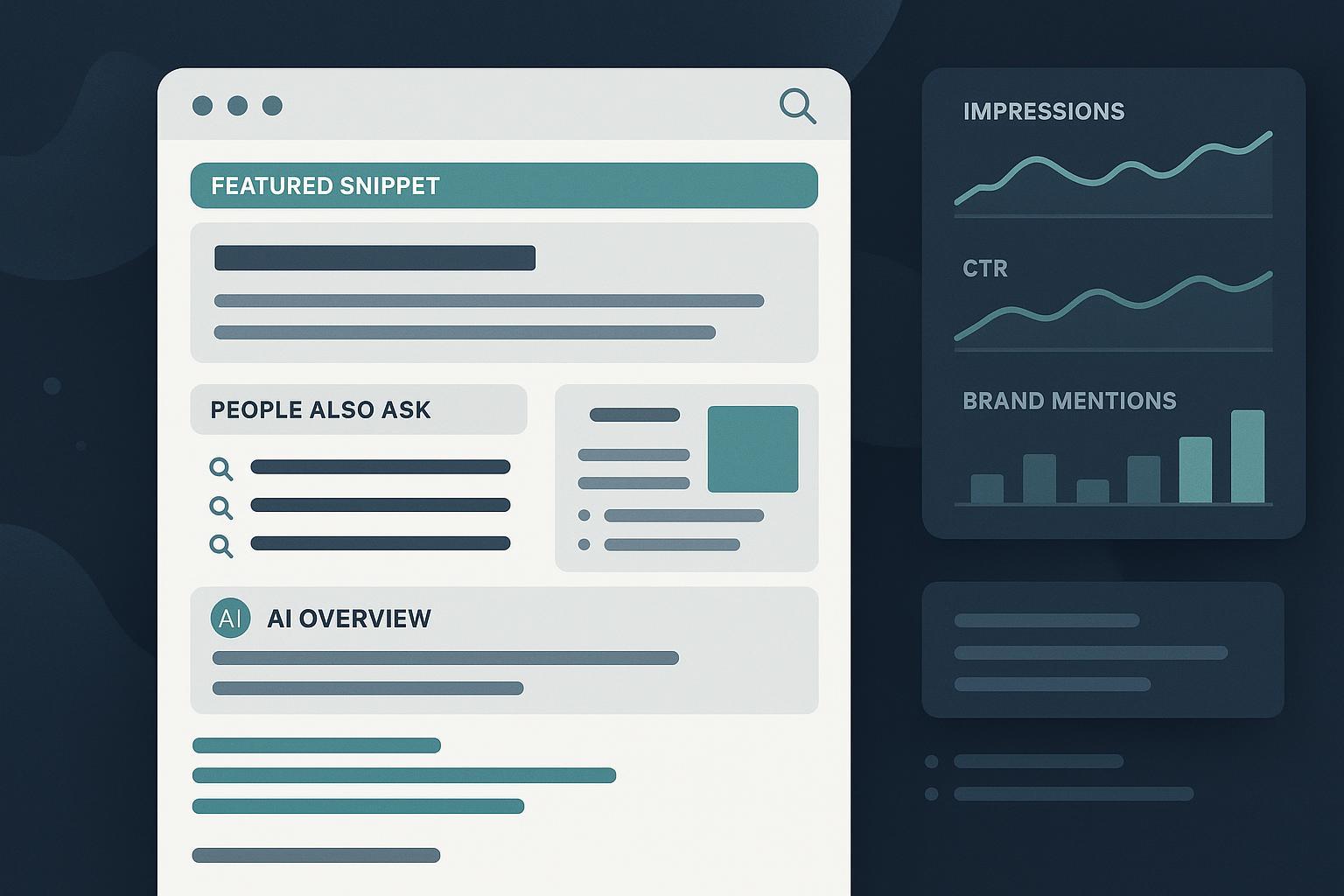
Zero‑click is no longer an edge case—it’s the default for many queries in 2025. Multiple cohort studies show that a majority of searches end without a downstream site click, and that AI Overviews (AIO) can materially suppress organic CTR when they appear. For context, SparkToro’s 2024 clickstream analysis with Datos estimated that nearly 60% of searches in the US and EU ended without a click, as covered by Search Engine Land’s summary of the 2024 SparkToro/Datos study. In 2025, publishers and SEO suites reported further shifts: for queries where AIO appears, top result CTR fell materially—Search Engine Journal’s July 2025 coverage of cohort analyses reported a drop from ~28% to ~19% CTR on position one when AIO is present (Search Engine Journal, 2025 CTR drop after AIO rollout). Pew Research’s March 2025 short read found users are less likely to click when an AI summary appears (Pew Research, 2025 AI summaries and click behavior).
The implication is clear: optimize for visibility, attribution, and engagement across SERP surfaces—even when you don’t get the click. Below is a practitioner playbook I’ve used and refined across 2023–2025 campaigns, with code, measurement frameworks, and candid trade‑offs.
1) Prioritize the surfaces that actually show up in zero‑click SERPs
Treat SERPs as product interfaces, not just referral pages. In 2025, the high‑impact surfaces are:
- Featured snippets and “People Also Ask” (PAA): Build clear, concise answers aligned to the most asked questions. Eligibility is content‑quality‑driven; you can’t force inclusion. Google’s documentation stresses helpful, people‑first content and experience signals; see Google’s Featured Snippets guidance (2025).
- AI Overviews (AIO): AIO appears variably by query and time. Studies show notable CTR suppression when present; Ahrefs aggregated data in 2025 indicating around 34–35% fewer clicks where AIO appears (Ahrefs, 2025 AIO reduces clicks). Your strategy should be to earn correct brand mentions and citations inside AIO and to present answers that AIO can attribute.
- Knowledge Panels and entity cards: Strengthen your entities (brand, people, products) so Google can attribute facts and route brand discovery. This is key to “zero‑click visibility” that still drives branded search, direct visits, calls, and social follows.
- Local Pack and Google Business Profile (GBP): For location‑dependent queries, GBP actions (calls, directions, bookings) are primary outcomes. You need to treat GBP as a conversion surface and instrument it accordingly.
- Visual packs (images/videos) and Discover: Optimize media assets with descriptive filenames, alt text, captions, and transcripts; these are common above‑the‑fold modules that often draw attention without clicks.
- Voice results: Conversational, short answers and strong entity signals can surface on assistant responses; speakable markup is limited but clarity and authority still matter.
Trade‑offs: Opting out of snippets (e.g., via nosnippet) can protect sensitive content but usually reduces visibility. There is no “AIO opt‑out” beyond general indexing/snippet controls; Google’s 2025 page on AI features reiterates quality and accessibility over tricks (Google Search Central, 2025 AI features overview).
2) Structured data that moves the needle (with clean JSON‑LD examples)
In a zero‑click world, clean schema helps search systems understand and attribute your entities and content.
- Organization: Foundation for brand identity and Knowledge Panels. Include
logoand authoritativesameAsprofiles. - LocalBusiness: Critical for NAP consistency and local pack relevance.
- Product + Review/AggregateRating: Fuels rich snippets and shopping cards.
- BreadcrumbList: Improves navigational display and associations.
- FAQPage/QAPage: Useful for on‑page UX and potential PAA alignment, but note eligibility changes.
Reminder: FAQ rich results have been restricted since August 8, 2023, and HowTo rich results have been deprecated; Google confirmed this in the Search Central blog post on FAQ/HowTo changes (2023).
Below are concise, copy‑paste‑ready examples. Validate with Google’s tools; keep schema aligned to visible content.
Organization
{
"@context": "https://schema.org",
"@type": "Organization",
"@id": "https://www.example.com/#organization",
"name": "Example Inc.",
"url": "https://www.example.com",
"logo": {
"@type": "ImageObject",
"url": "https://www.example.com/assets/logo.png"
},
"sameAs": [
"https://en.wikipedia.org/wiki/Example",
"https://www.wikidata.org/wiki/Q123456",
"https://www.linkedin.com/company/example",
"https://twitter.com/example"
],
"contactPoint": {
"@type": "ContactPoint",
"telephone": "+1-202-555-0147",
"contactType": "customer service",
"areaServed": "US"
}
}
LocalBusiness
{
"@context": "https://schema.org",
"@type": "LocalBusiness",
"@id": "https://www.example.com/#localbusiness",
"name": "Example Wellness Clinic",
"image": "https://www.example.com/images/clinic-front.jpg",
"url": "https://www.example.com",
"telephone": "+1-415-555-0199",
"priceRange": "$$",
"address": {
"@type": "PostalAddress",
"streetAddress": "123 Market St",
"addressLocality": "San Francisco",
"addressRegion": "CA",
"postalCode": "94105",
"addressCountry": "US"
},
"geo": {
"@type": "GeoCoordinates",
"latitude": 37.789,
"longitude": -122.394
},
"openingHoursSpecification": [{
"@type": "OpeningHoursSpecification",
"dayOfWeek": ["Monday","Tuesday","Wednesday","Thursday","Friday"],
"opens": "09:00",
"closes": "18:00"
}],
"sameAs": [
"https://g.page/example-wellness-clinic",
"https://www.yelp.com/biz/example-wellness-clinic-san-francisco"
]
}
Product with AggregateRating
{
"@context": "https://schema.org",
"@type": "Product",
"@id": "https://www.example.com/product/widget-2000#product",
"name": "Widget 2000",
"image": [
"https://www.example.com/images/widget-2000-front.jpg",
"https://www.example.com/images/widget-2000-side.jpg"
],
"description": "High‑precision gadget for home and office.",
"sku": "W2000",
"brand": {
"@type": "Brand",
"name": "Example"
},
"offers": {
"@type": "Offer",
"url": "https://www.example.com/product/widget-2000",
"priceCurrency": "USD",
"price": "129.00",
"availability": "https://schema.org/InStock"
},
"aggregateRating": {
"@type": "AggregateRating",
"ratingValue": "4.6",
"reviewCount": "187"
}
}
FAQPage (use for UX; rich results limited)
{
"@context": "https://schema.org",
"@type": "FAQPage",
"@id": "https://www.example.com/pricing#faq",
"mainEntity": [{
"@type": "Question",
"name": "Do you offer monthly billing?",
"acceptedAnswer": {
"@type": "Answer",
"text": "Yes, monthly and annual billing options are available."
}
},{
"@type": "Question",
"name": "Is there a free trial?",
"acceptedAnswer": {
"@type": "Answer",
"text": "We offer a 14‑day trial without requiring a credit card."
}
}]
}
Validation: Use Google’s Structured data introduction and validator (Search Central, 2025) to test and iterate. Keep schema synchronized with on‑page content to avoid spam signals.
3) Entity SEO: earn correct attribution across AI and knowledge surfaces
Entity strength determines whether your brand and experts get named in zero‑click experiences:
- Bind entities with
@idand consistent references. Use Organization markup with authoritativesameAsprofiles (Wikipedia, Wikidata, Crunchbase, LinkedIn). Cross‑link author bios to their external expert profiles. - Make NAP consistency a governance habit. Align GBP categories, attributes, and service areas; keep hours and photos fresh.
- Publish expert content with citations. Cite primary sources; list credentials; link to institutional affiliations.
- Request corrections and feedback for Knowledge Panels. Ensure site verification and social profile ownership to improve accuracy.
Why this matters: AI Overviews and knowledge cards synthesize facts. Strong entity signals reduce misattribution and increase the odds that your brand is the named source.
4) Content patterns that win zero‑click impressions without sacrificing depth
From practice, the best‑performing layouts combine snackable answers with authoritative detail:
- Answer first, then elaborate. Start sections with a 40–60‑word concise answer block, immediately followed by deeper context.
- Question‑led headings. Mirror PAA phrasing and long‑tail conversational queries; prioritize >7‑word questions where AIO prevalence is higher in several 2025 datasets (e.g., the 2.37M‑keyword analysis summarized by SEO.com/WebFX, 2025 AIO prevalence study).
- Cite and demonstrate. Include concrete data, author bios, and first‑hand examples; show screenshots where you can.
- Media hygiene. Describe images with alt text and captions; add transcripts to videos; compress and lazy‑load for fast rendering.
Governance note: Helpful, people‑first content with E‑E‑A‑T signals remains Google’s core direction in 2025; avoid thin or purely AI‑generated pages. See the emphasis in Google’s 2025 AI features guidance.
5) Local and GBP: treat it like a conversion surface
For local intents, your “conversion” often happens inside Google:
- Categories and attributes: Choose precise primary and secondary categories; add relevant attributes (e.g., “wheelchair accessible,” “online appointments”).
- Photos and posts: Publish fresh, high‑quality photos weekly; use GBP Posts for offers, events, and highlights.
- Reviews and Q&A: Invite reviews ethically; respond promptly; seed FAQs in GBP Q&A.
- Booking integrations: Connect appointment links; instrument clicks via UTM and GA4.
- Measure actions: Calls, directions, website visits, bookings—use GBP Insights and align with GA4 events.
Sector nuance: Healthcare and local services rely heavily on GBP actions; ecommerce sees value from image/video packs and product knowledge cards more than local pack.
6) Measurement: new KPIs for a zero‑click world
If you only report “sessions,” you’ll miss the story. Build a dashboard that triangulates:
- Impressions by query and page (Google Search Console). Watch cohorts where AIO frequently appears.
- Featured snippet and PAA coverage (Semrush, Ahrefs, STAT). Report % of target questions captured.
- AI Overview mentions and citations. Track whether your brand is named inside AIO; use screenshots, scheduled synthetic queries, and specialized trackers when available.
- Knowledge Panel coverage and accuracy. Monitor ownership and changes.
- GBP actions. Calls, directions, bookings—these are conversions in local journeys.
- Indirect conversions. Branded search volume, direct visits, assisted conversions in GA4.
There is no single perfect tool; combine datasets and validate claims. Industry coverage in 2025 emphasized using mixed sources because AIO labeling isn’t available in GSC; Search Engine Land noted varying AIO prevalence and CTR impacts across sectors (Search Engine Land, 2025 AIO impact overview).
7) Risk mitigation, legal, and governance
Risks to anticipate:
- Misattribution and misinformation inside AIO hurting brand reputation.
- Traffic and revenue declines from CTR suppression; uneven impact by sector.
- Bias toward “authoritative” sources that can marginalize smaller brands.
Controls and trade‑offs:
- Snippet controls: Use
nosnippet,max-snippet, anddata-nosnippeton sensitive content; see Google’s 2025 robots meta tag documentation. This can reduce visibility, so apply selectively. - AI crawler governance: You can block certain AI training bots (e.g., Google‑Extended, GPTBot) via robots.txt, but it will likely reduce AI visibility. For background on crawler management and evolving machine‑readable controls, see Google’s robots.txt introduction (Search Central, 2025).
- Rapid corrections: Publish errata posts, contact support channels, and strengthen entities to encourage correct attribution.
- Compliance: In health/finance, add disclaimers, cite regulators, and ensure consent for testimonials and reviews.
8) Reporting workflow: weekly cadence you can implement now
A repeatable weekly workflow I use with teams:
- Run a scheduled query set (50–100 priority questions) on desktop and mobile; capture screenshots for AIO presence, snippets, and packs.
- Export GSC impressions for the pages mapped to those questions; annotate any core updates.
- Update snippet/PAA coverage from your SEO suite; note changes and new questions.
- Log any AIO mentions or citations of your brand; file misattribution issues where needed.
- Review GBP Insights: calls, directions, bookings; compare to GA4 conversion events.
- Prioritize content updates: answer blocks, schema, media hygiene, and local details.
- Share a one‑page summary: top gains, risks, and next actions.
9) Sector‑specific playbooks (2‑week sprints)
These are starting points; adapt to your resources and goals.
- B2B/SaaS
- Weeks 1–2: Map comparison and “best for [use case]” queries. Publish transparent pricing explainer, case studies with quantified KPIs, and Q&A addressing integrations. Add Organization and Product schema; align LinkedIn/Crunchbase
sameAs. - Measure: snippet/PAA coverage, demo requests, brand impressions.
- Weeks 1–2: Map comparison and “best for [use case]” queries. Publish transparent pricing explainer, case studies with quantified KPIs, and Q&A addressing integrations. Add Organization and Product schema; align LinkedIn/Crunchbase
- Healthcare
- Weeks 1–2: Tune GBP categories; complete physician bios with credentials and insurance lists; add LocalBusiness schema. Kick off a reviews program and publish service Q&A pages.
- Measure: calls and bookings from GBP; track appointment conversions in GA4.
- Ecommerce
- Weeks 1–2: Ensure complete Product schema, comparison guides, FAQs, and high‑quality images/videos with transcripts. Target PAA clusters for seasonal questions.
- Measure: product impressions, add‑to‑cart rate, revenue attribution; watch image/video packs presence.
- Local services
- Weeks 1–2: Audit GBP and NAP; post fresh photos; answer GBP Q&A; connect booking links with tracking.
- Measure: calls, directions, booking clicks; iterate weekly.
10) Advanced technical hygiene for AI and zero‑click surfaces
- Canonicalization: Ensure the canonical points to the authoritative version; avoid duplication that can siphon snippets.
- Indexing hygiene: 200 status, indexable HTML, unblock critical resources; fix coverage issues in GSC.
- Server‑side rendering (SSR): Heavy client‑side rendering can hide content from some crawlers; several 2025 analyses recommend accessible HTML. See perspective from Profound’s 2025 note on AI crawlers and SSR.
- Content chunking: Use clear headings, IDs, and short answer blocks; align entity
@idreferences internally. - Media performance: Compress, lazy‑load, and use modern formats to avoid demotions from slow pages.
11) What to stop doing (and why)
- Chasing deprecated rich results: HowTo is gone; don’t invest engineering cycles there.
- Measuring only sessions: In zero‑click contexts, sessions underreport success—shift to impressions, coverage, and actions.
- Over‑automating content: Thin, AI‑only articles rarely earn snippets or AIO mentions; editorial review and evidence are essential.
12) Build your internal knowledge base and playbook
Create durable reference pages your team can maintain:
- Zero‑click SEO explainer with current 2025 data and your own cohorts.
- Measurement guide for AIO mentions, snippet coverage, and GBP actions.
- Entity SEO handbook with Organization/LocalBusiness schema examples and
sameAspolicies. - Snippet controls policy with use cases for
nosnippet,max-snippet, anddata-nosnippet.
For ongoing reading on AI search visibility, you can browse the Geneo blog index, which aggregates pieces on generative search and brand visibility.
13) Best practices checklist you can run this quarter
- Map your top 100 questions and intents; design pages with answer blocks + depth.
- Implement Organization and (where relevant) LocalBusiness/Product schema; validate monthly.
- Strengthen entity signals: bios, citations,
sameAsto authoritative profiles. - Instrument GBP: categories, attributes, posts, reviews, bookings; report actions weekly.
- Track snippet/PAA coverage, AIO mentions, and Knowledge Panel accuracy; screenshot and log changes.
- Build a zero‑click dashboard: impressions, coverage, GBP actions, indirect conversions.
- Apply snippet controls to sensitive content with clear trade‑off documentation.
- Maintain fast, accessible HTML; prefer SSR for critical content.
- Review content quarterly for E‑E‑A‑T; add sources, data, and first‑hand experience.
A final perspective: zero‑click doesn’t mean zero value. The brands winning in 2025 treat SERPs as distribution and conversion surfaces. They earn visibility and attribution even when the click doesn’t happen—and they measure the impact with the right KPIs.
References embedded above include 2025 guidance and data points from Google Search Central and industry analyses such as Search Engine Land and Search Engine Journal, plus cohort studies from Ahrefs and Pew Research. Limitations apply: datasets and methodologies vary by sector, device, and time; triangulate with your own logs and experiments.


